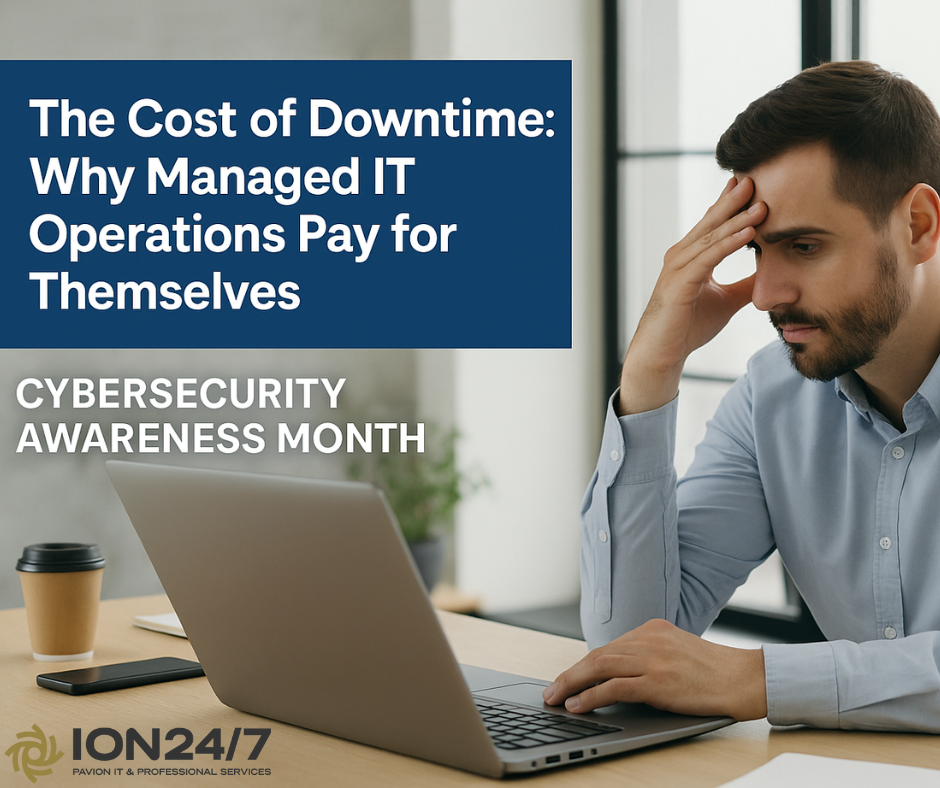Downtime Is More Than an Inconvenience
IT downtime doesn’t just stall employees — it costs money, credibility, and customer trust. Whether it’s a server crash, network outage, or application failure, the hidden costs stack up quickly. Gartner estimates that the average cost of downtime is $5,600 per minute. For small and midsize businesses (SMBs), even a single incident can drain tens of thousands of dollars.
With hybrid workforces, cloud-based systems, and always-on customer expectations, downtime is no longer tolerable. The question isn’t whether it will happen — it’s how prepared you are when it does.
What Downtime Really Costs Businesses
Most organizations underestimate the true cost of downtime. It’s more than IT staff hours, it affects every layer of the business.
- Lost Productivity: Employees waiting for systems to come back online can’t serve customers or complete tasks.
- Missed Revenue: Ecommerce sites, online orders, and sales processes grind to a halt.
- Reputational Damage: Customers expect 24/7 availability. Downtime damages trust and drives them to competitors.
- Regulatory Penalties: Industries like healthcare or finance risk compliance violations when systems go dark.
A one-hour outage at a 50-person law firm can cost upwards of $25,000 in lost billable hours alone. Add in delayed client deliverables and reputational harm, and the number multiplies.
Why Break/Fix IT No Longer Works
Many SMBs still rely on a “break/fix” approach — calling for help only when something goes wrong. This reactive model is risky.
- Problems are only discovered once users are already affected.
- Fixes take longer since there’s no monitoring to catch root causes early.
- Unexpected repair bills disrupt budgeting.
In short: break/fix IT saves money on the front end but costs far more in the long run.
The Business Case for Managed IT Operations
Managed IT services replace unpredictability with proactive support. With continuous monitoring, automated alerts, and expert intervention, downtime can often be prevented before it begins.
Key Benefits:
- Proactive Monitoring: Detects issues before they escalate into outages.
- Predictable Costs: Fixed monthly fees eliminate surprise bills.
- Improved Productivity: Employees spend less time troubleshooting and more time serving customers.
- Faster Recovery: If downtime occurs, managed service providers (MSPs) resolve it faster due to visibility and preparation.
A regional healthcare provider that moved from break/fix to managed IT with ION247 reduced downtime by 65% in the first year, saving an estimated $250,000 in lost productivity and revenue.
Why Now? The SMB Risk Landscape
- Remote Work Dependence: With distributed teams, downtime impacts collaboration instantly.
- Cloud Reliance: Every app outage affects payroll, HR, and CRM systems simultaneously.
- Cybersecurity Threats: Ransomware attacks often cause days of downtime; proactive monitoring helps prevent them.
Downtime is expensive, unpredictable, and preventable. Managed IT operations transform IT from a cost center into a business continuity investment.
Don’t gamble with downtime. Talk to ION247 about our managed IT services and see how proactive monitoring pays for itself.
Q: What is IT downtime?
IT downtime is when critical systems, applications, or networks are unavailable, disrupting normal business operations and costing time and money.
Q: How much does downtime cost small and midsize businesses?
On average, downtime costs $5,600 per minute, according to Gartner. For SMBs, even one hour of downtime can cost tens of thousands in lost productivity and revenue.
Q: What is the difference between break/fix IT and managed IT services?
Break/fix IT is reactive support when something breaks, while managed IT services provide proactive monitoring, maintenance, and prevention to reduce downtime.
Q: Why should SMBs invest in managed IT services?
Managed IT helps prevent outages, reduces hidden costs, provides predictable monthly fees, and ensures faster recovery when issues occur.

